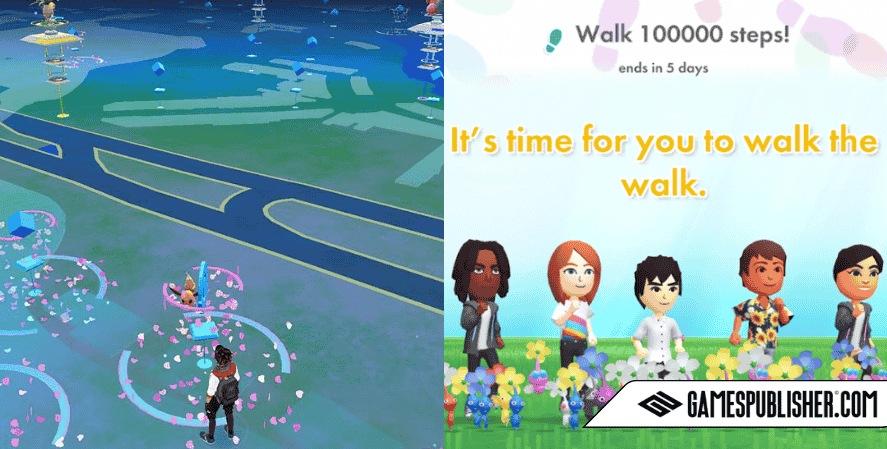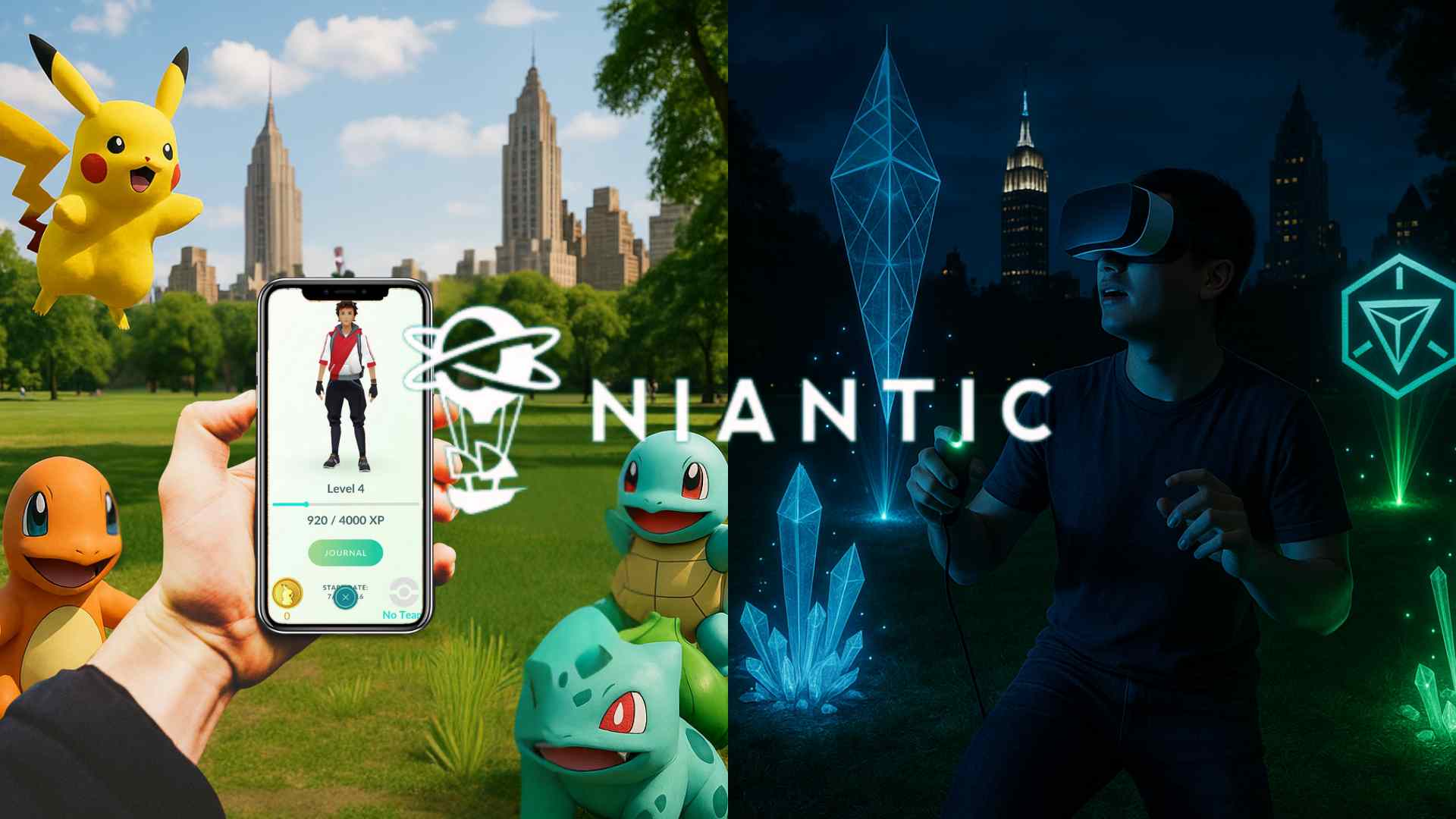Welcome to Gamespublisher.com, the go-to destination for game developers and video game publishers looking to explore emerging trends in gaming. In this article, we will take an in-depth look at Niantic Games, the trailblazer that revolutionized mobile entertainment with augmented reality (AR) and real-world exploration.
Right from the start, Niantic Games stood apart by turning the physical world into a playground. Unlike many developers who build immersive fantasy realms, Niantic wanted players to go outside, move around, and connect with their environment. Understanding their strategy can offer meaningful insights for anyone involved in game development, especially if you aim to design games that combine movement, storytelling, and social interaction.
Let’s begin with a look at how Niantic came to be, what they stand for, and the genre-defining titles they have developed over the years.
Niantic Games – A Pioneer in Augmented Reality Gaming
To understand the success of Niantic Games, it’s helpful to start with their roots. The company was founded in 2010 by John Hanke, who had already worked on major projects like Google Earth. Niantic started as a startup within Google and later spun off in 2015 as an independent company.
A Vision Beyond the Screen
Niantic’s mission is clear: “To use emerging technology to enrich our experiences as human beings in the physical world.”
Unlike traditional game studios, Niantic focused on creating games that encourage players to explore their surroundings. Their focus includes:
- Augmented reality
- Geolocation and real-world data
- Social gameplay
- Fitness and outdoor activity
- Player-driven content and exploration
These priorities have shaped every one of their releases, setting a new standard for how game developers can integrate the real world with digital entertainment.
Niantic Games – Complete Game List by Genre

To fully grasp Niantic’s journey, it’s important to examine each of their games by video game genres. This table provides a breakdown of each title, its launch date, current status, and platform.
| Title | Release Date | Genre | Status | Platforms | Notes |
|---|---|---|---|---|---|
| Ingress | Nov 2012 (beta), Oct 2013 | Location-based AR | Active | iOS, Android | First Niantic game; updated as Ingress Prime in 2018 |
| Pokémon GO | Jul 2016 | Location-based AR | Active | iOS, Android | Now operated by Scopely after Niantic sold its game division in 2025 |
| Harry Potter: Wizards Unite | 2019 | Location-based AR | Discontinued (2022) | iOS, Android | Closed after underperforming despite strong IP |
| Pikmin Bloom | Oct 2021 | Casual, Location-based AR | Active | iOS, Android | Built with Nintendo; transferred to Scopely in 2025 |
| CATAN: World Explorers | Jul 2020 (beta) | Strategy, Location-based AR | Cancelled (2021) | iOS, Android | Never reached full launch; shut down during testing |
| Peridot | May 2023 | Virtual-pet, AR | Active | iOS, Android | Still operated by Niantic (now Niantic Spatial) |
| Monster Hunter Now | Sep 2023 | Action RPG, Location-based AR | Active | iOS, Android | Developed with Capcom; moved to Scopely |
| NBA All-World | Jan 2023 | Sports, Location-based AR | Discontinued (2023) | iOS, Android | Closed less than a year after release |
| MARVEL World of Heroes | Apr–May 2023 (beta) | Superhero, Location-based AR | Cancelled (2023) | iOS, Android | Project was ended during early beta tests |
| Transformers: Heavy Metal | 2021 (beta) | Action, Location-based AR | Cancelled (2022) | iOS, Android | Closed during company-wide restructuring |
| Endgame: Proving Ground | 2014 (announced) | Sci-fi ARG/AR | Cancelled (2015) | N/A | Never released; based on a book series |
This list shows that while Niantic had several hits, it also faced many challenges. Their genre focus remains clear, as they primarily built location-based AR games with strong social and exploratory features. Even games that didn’t make it past beta serve as case studies for future game developers.
Niantic Games – Flagship Titles and Innovations
Let’s take a closer look at some of Niantic’s most well-known games and explore what made them successful or influential.
Pokémon GO – The Game That Changed Mobile AR Forever
When niantic pokemon go launched in July 2016, it quickly became a global sensation. Within its first month, the game had tens of millions of downloads. People around the world were walking around parks, malls, and neighborhoods trying to catch virtual Pokémon.
Key Features and Innovations:
- Real-world locations become PokéStops and Gyms
- Events like GO Fest and Community Days bring people together
- Raid battles and PvP increase social interaction
- In-app purchases drive monetization through incubators, raid passes, and cosmetics
Even after being sold to Scopely in 2025, pokemon go niantic inc continues to thrive under their live ops team. This game showed that AR could work at scale, not just as a gimmick but as a real, revenue-generating product.
Ingress – The Original AR Game
Before Pokémon GO, there was Ingress, Niantic’s first AR game and a powerful tool for testing location-based systems.
Notable Elements:
- Two competing factions: The Enlightened and The Resistance
- Portals based on real-world landmarks, later reused for other games
- Strategic gameplay based on controlling areas in the real world
- Strong community involvement with local and global meetups
Ingress didn’t reach mainstream popularity, but it built the foundation for everything that followed. Its community also became the backbone of niantic wayfarer, a program where players help add and review real-world locations used across Niantic’s games.
Peridot and Pikmin Bloom – Gentle AR for a Broader Audience
Not every game needs fast action. Niantic’s move into casual gaming is visible in these two projects.
Peridot:
This virtual pet game lets you raise creatures from birth. You can take them for walks, feed them, and even breed new generations with different traits. It taps into emotional gameplay, which keeps users coming back daily.
Pikmin Bloom:
In partnership with Nintendo, Pikmin Bloom encourages daily walking. Players plant flowers, collect Pikmin, and build walking habits. While the gameplay is light, its charm lies in routine and discovery. The game has been especially successful among families and older players, reinforcing Niantic’s reach into the niantic kids segment.
Monster Hunter Now – Action Meets AR
One of Niantic’s more recent titles, Monster Hunter Now, showed how AR could work with action-heavy gameplay.
Key Points:
- Based on Capcom’s popular franchise
- Combines fast combat with real-world exploration
- Features timed battles and co-op hunting
- Adapted for short sessions, keeping mobile play in mind
After its initial success, the game joined the Scopely portfolio. Its smart design offers lessons for developers trying to blend real-time mechanics with outdoor movement.
Niantic Games – Technology and Tools Behind the Magic
Beyond the games themselves, Niantic has invested in tools to support developers across the industry.

Lightship ARDK – Bringing AR to More Developers
The Lightship ARDK is Niantic’s toolkit for creating location-based and AR-driven apps. Built to work with Unity, it helps developers integrate AR without building from scratch.
Core Features:
- Real-time meshing for understanding space
- Occlusion, which allows virtual objects to hide behind real ones
- Visual Positioning System (VPS) for accurate placement based on real-world scans
As a result of these tools, Niantic has opened the door for indie studios and new game publishers to create their own AR experiences. Moreover, by offering templates, guides, and grants, they make the technology both accessible and scalable.
Real-World Mapping and Crowdsourcing
Niantic’s games would not function without real-world data. Through Niantic Wayfarer, players help build the game world.
Key Stats and Features:
- Over 15 million points of interest have been mapped
- Players submit, review, and approve real-world locations
- Used across games like Pokémon GO, Ingress, and Pikmin Bloom
- Raises questions about privacy and access that developers must consider
This crowdsourced approach allows Niantic to maintain a dynamic and accurate game environment, something most video game publishers could only dream of in the past.
Niantic Games – Business Models and Monetization
Many developers create strong games but struggle to turn them into profitable ventures. Niantic Games, however, has tested multiple models to support their live-service titles. These include traditional in-app purchases, partnerships, and event-driven revenue. Let’s break them down.

In-App Purchases and Player Progression Systems
One of Niantic’s most consistent revenue streams is through microtransactions. Their strategy focuses on offering value while avoiding pay-to-win dynamics.
Monetization Elements:
- Incubators and lures that boost gameplay efficiency
- Cosmetic items like clothing and accessories
- Event tickets for limited-time gameplay
- Remote Raid Passes, used widely during global events
- Battle passes, used seasonally in some titles
This layered approach keeps purchases optional but tempting. Players progress faster with these boosts, yet all content remains accessible without spending. This model aligns with current trends in game publishing, offering developers a solid example of balanced monetization.
Sponsored Locations and Real-World Ads
A unique revenue strategy by Niantic is sponsored locations, which many traditional video game publishers don’t offer. This approach turns real-world businesses into in-game destinations.
Key Examples:
- Starbucks, McDonald’s, and 7-Eleven as in-game PokéStop partners
- Local restaurants and retailers attracting players through branded locations
- Ad-based incentives that reward gameplay while promoting real-world activity
For game developers interested in augmented reality, this model shows how to combine local businesses and gameplay in mutually beneficial ways. It also promotes healthy walking habits, creating value beyond the screen.
Event-Based Revenue and Global Gatherings
Niantic also excels at turning events into major revenue opportunities.
Event Types:
- GO Fest: Global multi-day events that attract millions of players
- Community Days: Monthly mini-events that increase player activity
- Limited-time raids and challenges that require planning and cooperation
Events often feature:
- Exclusive content
- Themed collectibles
- Access to new gameplay mechanics
- Merchandise via the niantic store or niantic web store
Together, these experiences build excitement and deepen player loyalty. In fact, the success of these events clearly highlights how physical gatherings can effectively support digital games. Interestingly, some players even visit places like Book Barn Niantic, a local spot that gained attention through its unique connection to AR gameplay.
Niantic Games – Community Building and Player Engagement
Games are not just software. They are communities. This is especially true for Niantic Games, which rely heavily on real-world interaction and social design.

Social Mechanics and Local Communities
Niantic understands that people return to games when they feel connected to others. Their titles include built-in systems that encourage cooperation, competition, and friendship.
Social Features:
- Teams and factions that players can join
- Friend lists, trading, and co-op gameplay
- In-game chat, gifts, and invitations
- Real-world meetups that grow into long-term groups
By blending digital play with real-world connection, Niantic encourages stronger emotional investment. For developers, this approach can improve long-term retention and reduce churn.
Feedback Mechanisms and Adaptive Game Design
Niantic doesn’t always get it right, but one thing they do well is listen and adapt. Over time, they’ve learned how to respond to community feedback and make meaningful adjustments.
Examples of Adaptation:
- Increased interaction ranges during COVID lockdowns
- Rebalanced in-game currencies to reduce grinding
- Temporary boosts to support players in remote areas
- Rollbacks of unpopular features based on public outcry
As a result, this responsive strategy has helped Niantic build a strong reputation for transparency. Therefore, for anyone involved in game development, it serves as a clear reminder that listening to your audience is just as important as launching new features.
Niantic Games – Challenges, Failures, and Lessons
While Niantic had several blockbuster successes, not all of their titles survived. In fact, many projects were cancelled before or shortly after launch. Yet these failures provide valuable insights for both developers and game publishers.

Major Game Closures:
- Harry Potter: Wizards Unite failed to maintain long-term interest despite a strong brand
- NBA All-World saw a short lifespan, struggling to build an active community
- CATAN: World Explorers ended before a full global launch
- MARVEL World of Heroes and Transformers: Heavy Metal were cancelled during soft-launch stages
These cases highlight common pitfalls:
- Relying too heavily on brand recognition
- Poor user onboarding and lack of engagement hooks
- Technical issues with AR functionality or location data
- Limited social features or local incentives
For developers, this means testing early, iterating fast, and ensuring your AR mechanics serve real needs rather than gimmicks.
Niantic Games – What’s Next and Why It Matters for Developers
As of 2025, Niantic has shifted its focus. With many of their games now operated by Scopely, the company has returned to its roots in spatial computing and AR innovation. They are betting big on the real-world metaverse.
Niantic’s Vision of a Real-World Metaverse
Unlike virtual metaverses that keep players in headsets, Niantic imagines a future where AR is used to enhance reality. They believe in layered experiences that are shared and persistent.
Future Plans:
- Development of AR glasses in partnership with hardware brands
- Expansion of VPS mapping to cover even more global locations
- Integration with non-gaming apps like tourism, education, and fitness
- Creation of virtual objects anchored in real space that persist over time
This vision aligns with the evolution of game genres where play happens in the real world and evolves over time. It also gives developers a unique canvas to build on.
How Indie Developers Can Build on Niantic’s Platform
Through Lightship, Niantic offers an open path for smaller studios to create their own experiences using the same core tools.
Opportunities for Developers:
- Access to Unity-based templates for AR game mechanics
- VPS Challenge events and grant programs for prototypes
- Educational materials to train new AR creators
- Direct community support and active developer forums
If you are exploring game publishing in AR, this is a chance to enter the field without a major budget. Several indie teams have already launched successful projects using Lightship.
For example:
- Orna: A fantasy RPG that overlays real-world maps
- Shattered Reality: A narrative-driven location game based on local landmarks
This trend shows that AR development is not limited to giants. With the right tools, game developers everywhere can build games that change how we experience the world.
Conclusion
Niantic Games has changed the face of mobile gaming. From Pokémon GO to Ingress, and from Peridot to Monster Hunter Now, the company has shown what is possible when technology, movement, and social interaction come together.
Their journey offers many lessons:
- Build with purpose, not just features
- Invest in tools and community, not just marketing
- Listen to players and grow with them
Whether you are an indie creator, a startup studio, or an established video game publisher, Niantic’s story is packed with useful insights. They’ve made AR approachable, interactive, and profitable. And more importantly, they’ve proven that the real world still has room for play.
As you continue your journey in game development, let this serve as a reminder. The next great game doesn’t have to stay on a screen. With the right tools and creative thinking, it could unfold on a sidewalk, a local park, or even the bookstore around the corner.
Loading survey...

